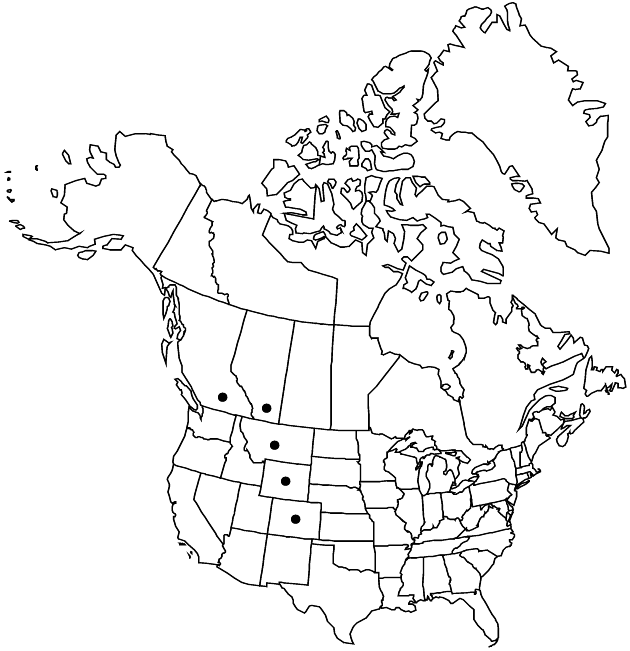Erigeron lanatus
Fl. Bor.-Amer. 2: 17, plate 121. 1834.
Perennials, 2–5 cm; taprooted, roots sometimes barely evident, caudices diffuse, with extensive systems of rhizomelike, relatively long, slender branches. Stems erect (simple, ± scapiform), finely and loosely villous, minutely glandular. Leaves basal (persistent); blades oblanceolate to oblong-oblanceolate, 5–25 (–30) × 2–5 mm, strongly reduced distally, margins usually entire, smallest and earliest usually 3-toothed or lobed apically (lobes or teeth acute), ultimately entire, finely and loosely lanate-villous, eglandular. Heads 1. Involucres 9–13 × 12–23 mm. Phyllaries in 2–3 series (purple or purple-tipped), moderately to densely, finely and loosely villous (hairs sometimes with purple cross-walls), minutely glandular. Ray-florets 30–80; corollas white or purplish, 8–11 mm, laminae not coiling or reflexing, spreading. Disc corollas 5–6.5 mm. Cypselae 3.5–4 mm, 2-nerved, faces finely hirtellous to glabrate; pappi: outer of setae, inner of 25–35 (whitish to tawny) bristles (often twisted). 2n = 36.
Phenology: Flowering Jul–Aug.
Habitat: Open, rocky, alpine and subalpine habitats, often on limestone talus
Elevation: (1300–)2100–4100 m
Distribution

Alta., B.C., Colo., Mont., Wyo.
Discussion
Selected References
None.